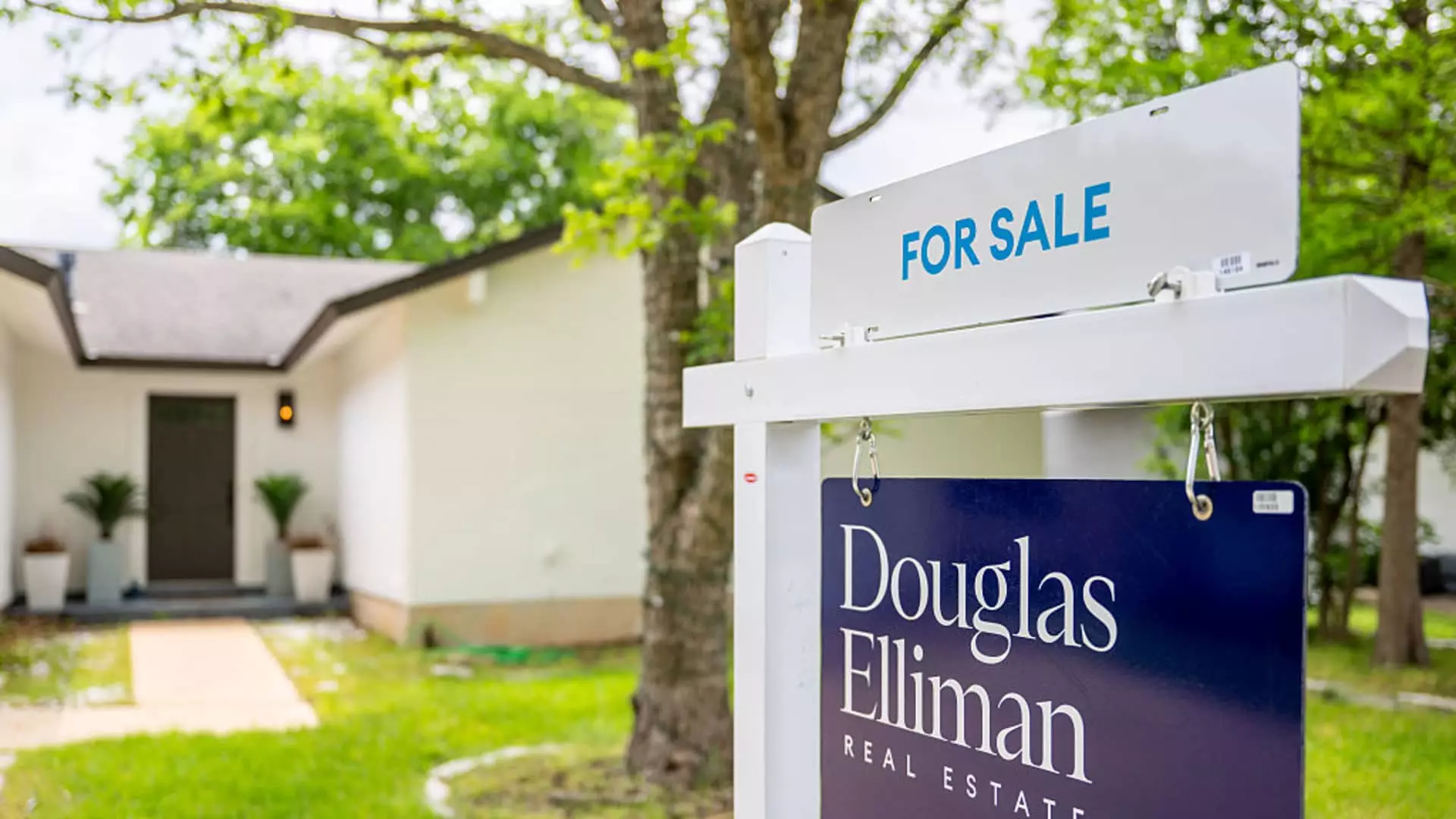In May, the sales of previously owned homes saw a minor uptick of 0.8% from April, leading to an adjusted annual sales rate of 4.03 million units. Analysts had anticipated a decline of 1%, so on the surface, this increase may seem like a sign of resilience. However, the reality is more nuanced. Sales are still down 0.7% year-over-year and reflect a disheartening stagnation in a market desperately needing momentum. The persistent high mortgage rates, now hovering above 7%, loom large over these numbers, indicating that potential buyers remain hesitant, unwilling to commit to a market shackled by increasing financing costs.
The National Association of Realtors (NAR) attributes these tepid sales figures to the enduring influence of elevated mortgage rates. This perspective has merit; when interest rates are high, the monthly burden of homeownership escalates, deterring many from entering the market. Lawrence Yun, NAR’s chief economist, articulates the critical link between lower interest rates and home sales. For an economy that demands dynamism, this dependency on external financial conditions is concerning. The hope for a rate drop in the latter half of the year feels more like a wish than a sound economic strategy.
The Regional Divide: A Tale of Two Markets
Notably, the performance of home sales varies significantly across different regions. The Northeast experienced the only substantial gains, with an increase of 4.2% month-to-month. In contrast, the West, where prices have reached an unsustainable pinnacle, recorded a steep 5.4% drop in sales. This discrepancy highlights a troubling reality: regions with high costs suffer the most during periods of financial uncertainty. Higher prices not only limit buyer participation but also expose sellers to the harsh truth of a declining market.
One cannot ignore the implications of a slim median price increase of 1.3% year-over-year, resulting in a record median price of $422,800 for May. This slight escalation in prices in conjunction with an ongoing demand-supply imbalance—wherein 28% of transactions involved competitive bids above listing prices—illustrates the delicate tension within the market. While sellers may enjoy short-term price boosts, the long-term sustainability of these values remains in jeopardy, hampered by stagnant consumer participation and diminishing affordability.
Strained Market Dynamics: Inventory Insights
The increased inventory supply, sitting at 1.54 million units—an increase of over 20% from the previous year—paint a somewhat optimistic picture. However, at a 4.6-month current sales pace, it is essential to note that this inventory level is still relatively light. Home sales driven by an extensive supply can entice more buyers, but if those buyers are deterred by high mortgage costs, the net effect remains flattened.
This tension exposes a critical vulnerability: a growing inventory does not automatically translate to sales in a financially stressed environment. For instance, homes now take 27 days to sell compared to just 24 days last year. Speedier transactions might indicate a hot market; however, as days on market increase, the nuance indicates hesitation rather than enthusiasm. First-time buyers make up a mere 30% of the market, reflecting both economic challenges for younger demographics and signaling that a generation is being priced out of owning a home.
Market Shifts and Investor Behavior
Interestingly enough, while the high-end market has traditionally fared better, it too is experiencing a slowdown. The only segment that witnessed a modest bump was between $750,000 and $1 million, suggesting an adaptive behavior among buyers seeking relative value amidst turmoil. It’s a reminder that while real estate is often touted as a secure investment, market sentiment is volatile and affects even the upper echelons of the housing sector. The residual impact of stock market fluctuations, especially in an uncertain trading environment nourished by tariffs and inflation, further complicates buyer confidence.
The growing prevalence of all-cash transactions at 27% distinctly illustrates a trend where wealthier buyers leverage their financial power in a turbulent market. Meanwhile, the more vulnerable segments struggle to keep pace, trapped by the weight of persistent economic pressures. In a land where ownership was once seen as an attainable future, we now face an uncomfortable truth—homeownership is becoming an increasingly exclusive privilege, reinforcing economic disparities that could resonate for generations.
In essence, America’s housing market is at a crossroads, fraught with contradictions that require genuine insight and actionable strategies. The fleeting uptick in sales provides an illusion of success, but a careful examination reveals a trend line heading toward stagnation. As the nation grapples with these realities, the future of housing affordability and accessibility hangs precariously in the balance.

